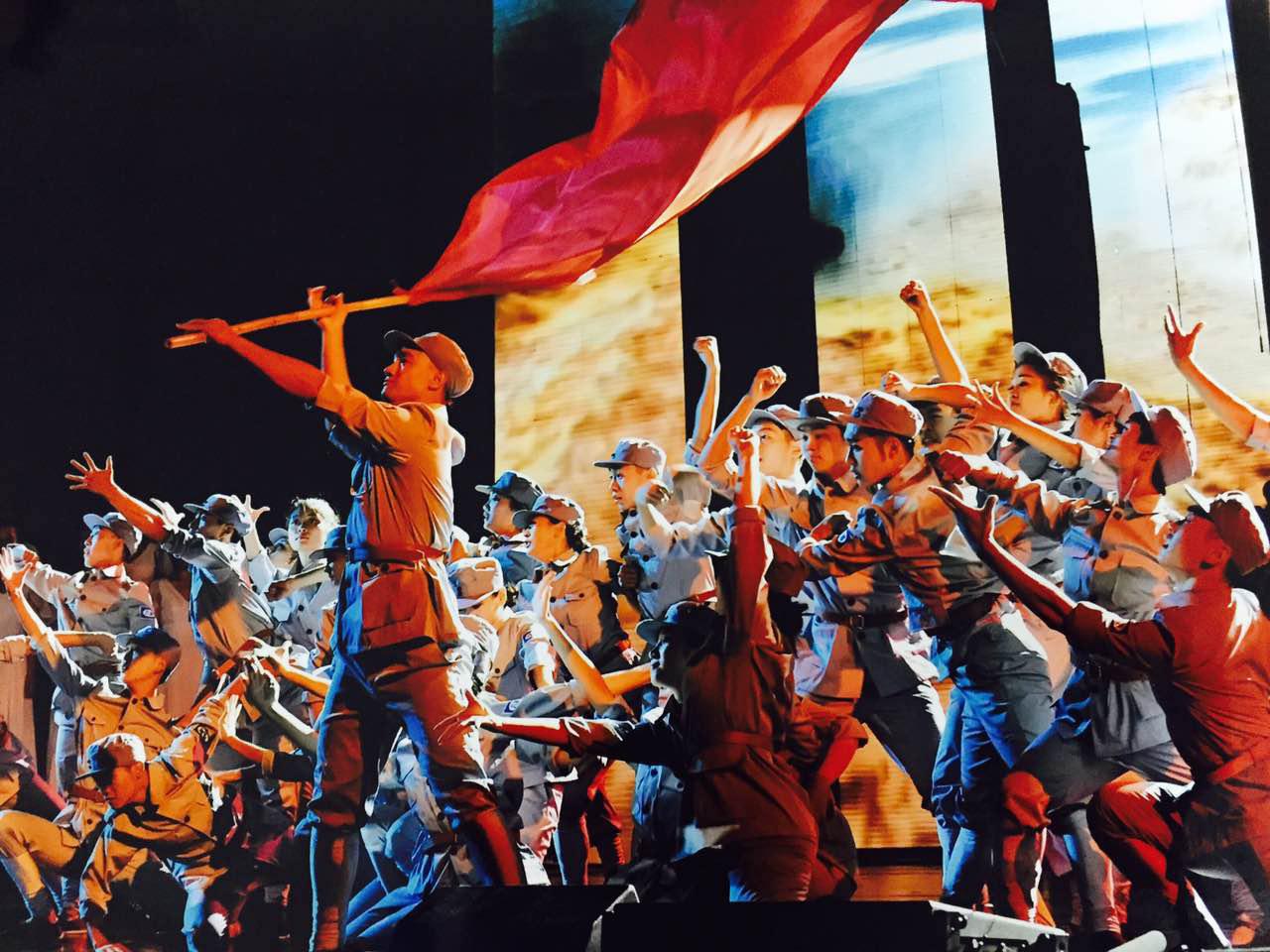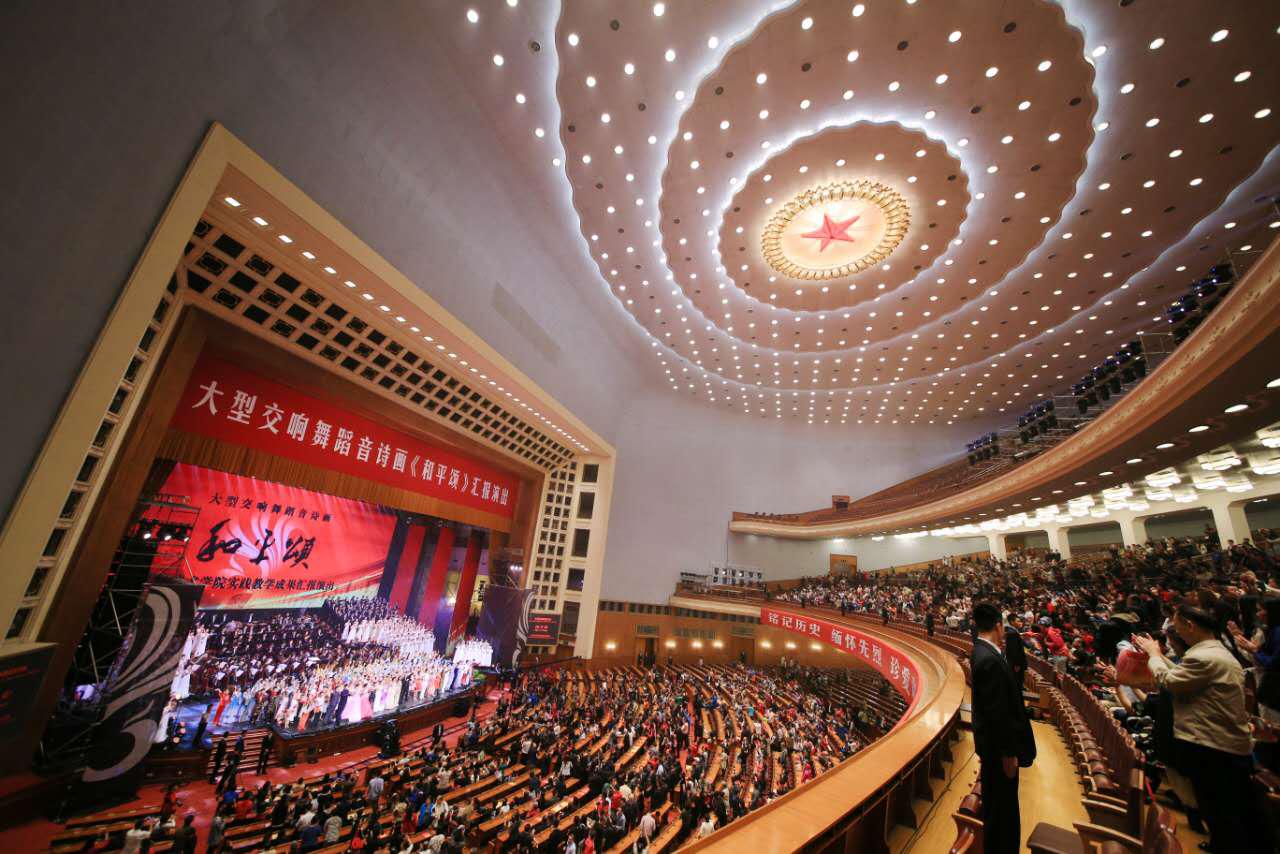Under the national spiritual guidance of “remembering history, cherishing martyrs, loving peace and creating the future”, Dalian Art College, as the witness of history, created and performed the large symphony dance epic "Ode to Peace". After it has been performed in Dalian and Shenyang, this show walked in the Great Hall of the People for special performance on September 29.
This performance activity is jointly organized by SinoFriends International Art Exchange Institute, Dalian Jinpu New District Management Committee and Dalian Art College. The foreign ambassadors, international friends, foreign students, the representatives of eleven art institutions in Beijing and people loving peace were gathered at the Great Hall of the People to enjoy this show.

We have prepared for “Ode to Peace” for over one year. WANG Xianjun, our chairman, was the general planner, director, and writer of this show. Professor RUAN Zhenming was the writer. GAO Dalin was the composer. Many professors, teachers and students in our school participated in art creation and performance.
With epic grand style, magnificent music and beautiful dance, LED, light, costume and props, we created a large astonishing symphony epic “Ode to Peace” for the audience in China. From history to now, from the west to the east, “Ode to Peace” highlights the theme of peace. Praising for the historic legacy and great country responsibility of “once taken, for all” is taken as the main line of this show. We return to the time that people were longing for love and peace. The deepest memory buried in the heart of Chinese people is revealed, reflecting our love and praise for love and peace.

“History” and “epic” are combined perfectly in this show. This show retells the famous historical stories in China, e.g. Zhang Qian’s contribution to Han’s open-up policy to the western countries, Silk Road in the flourishing Tang Dynasty and Zheng He’s travelling to the west. We displayed magnificent scenes on the stage for audience to highly revive the glorious parts of Chinese history with the combination of majestic symphony, traditional Chinese music, leading singing, solo, chorus, recitation, China’s northwest single-drum, Indian dance, Spanish Flamenco, Chinese water-sleeve dance and Russian folk dance. The whole show was glamorous and magnificent. “Ode to Peace” is of great ornamental value and artistic expressive force.
The music of “Ode to Peace” is really characteristic. Six original songs, five anti-Japanese war songs, seventeen dancing music songs, and background recitation music songs are closely interlinked with the themes of world anti-Fascist war and China anti-Fascist war. The music not only highlights the exotic musical styles of the world but also emphasizes the features of traditional Chinese music. World music and Chinese music are intertwined harmoniously. Ancient Greek musical elements are adopted in the dance play “Olympics”. The ancient Greek music is very old and original and we adopt these musical elements in order to display strong ancient Greek musical style. In each section of work, traditional Chinese musical instruments, Ehru, bamboo flute, pipa, Zhong Ruan, Gu Zheng, and Pan Ku are used to display our appealing Chinese traditional music. For example, in the third section, bamboo flute and pipa lead under the background of symphony orchestra in order to bring the audience back to the Anti-Japan Bases of Jin-Ji-Lu-Yu to feel its strong regional features and the anti-war feelings of army and the people. In the forth section, Pan Ku is added to make the “water-sleeve” dance more nationalized and more appealing to the dance of Tsing Yi which better display the characteristics of Chinese national music and dance.
The artistic expressive forms of “Ode to Peace” are continuously polished. After the first show of “Ode to Peace”, we add three dances on the basis of the original fourteen dances before the second rehearsal. Almost all the dance movements are refined and the dance skills are improved.
Oratorios “Johann Adam Schall von Bell” and “Soul of Cherry” and “Ode to Peace” are praised as the “peace trilogy” of Dalian Art College. We not only play the splendid stories on the stage but also show our spirit of “excellence pursuit, pioneer, and bravery” to all sides of society.